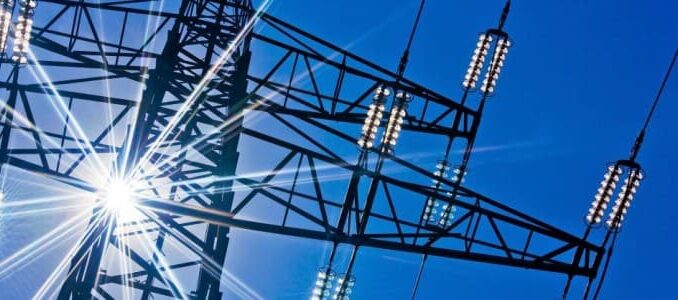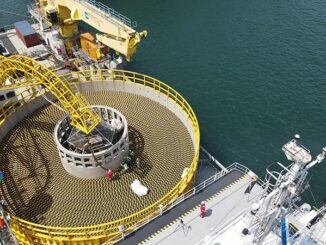
In a groundbreaking development that could reshape the landscape of power generation, China has unveiled the world’s first supercritical carbon dioxide (sCO2) power generator. This innovative technology, which uses CO2 in a supercritical state as its working fluid instead of traditional steam, promises higher efficiency, reduced environmental impact, and versatile applications across various industries.
Unlike conventional thermal power systems that rely on water and fuel, this turbine harnesses industrial waste heat to produce electricity, marking a significant leap forward in sustainable energy solutions.
The Technology Behind the Turbine
The sCO2 turbine operates by subjecting CO2 to high-pressure and high-temperature conditions, transforming it into a supercritical state where it behaves like both a gas (low friction) and a liquid (high density).
This unique property allows for a more compact design—turbines can be much smaller than their steam counterparts, making them suitable for installation in tight spaces, such as on ships or even in spacecraft.
The system eliminates the need for water, simplifies equipment, and cuts down on maintenance, all while achieving an efficiency rate exceeding 50% in converting heat to electricity—far surpassing the 40% typical of traditional steam-based generators.
Recently connected to the grid in a demonstration project, the turbine draws waste heat from sources like steelmaking processes, where temperatures can reach up to 700°C during sintering.
Once fully operational, units like the two 15-megawatt systems in development are expected to capture and utilize waste heat 50% more efficiently than current technologies.
Beyond efficiency, this tech could transform carbon capture and utilization strategies by repurposing captured CO2 for profitable energy production, rather than costly storage or sequestration.
Revitalizing the Steel Industry
The steel industry, one of the most energy-intensive sectors globally, stands to gain immensely from sCO2 turbine technology. Steel production generates vast amounts of waste heat—often vented into the atmosphere—from processes like sintering, blast furnaces, and rolling mills.
China’s new turbine directly addresses this by integrating with these heat sources to generate electricity on-site, potentially turning a liability into a revenue stream.
Studies show that sCO2 systems can recover waste heat more effectively than traditional methods, with potential efficiency gains in the range of 20-50% depending on the cycle configuration.
For instance, in steel plants, where waste heat temperatures align well with sCO2 operating ranges (400-800°C), this could reduce overall energy consumption by up to 10-15%, lowering operational costs and emissions.
By enabling better waste heat recuperation, the technology could help steel manufacturers meet stricter carbon regulations, such as those under the EU’s Carbon Border Adjustment Mechanism or China’s carbon trading schemes. Moreover, the compact nature of sCO2 turbines allows for retrofitting into existing facilities without major overhauls, revitalizing aging steel mills by improving their competitiveness.
This isn’t just theoretical—China’s demonstration unit is already tied to steel plant operations, signaling a path toward widespread adoption that could boost the industry’s sustainability and profitability.
Extending Benefits to the Cement Industry
While the initial focus has been on steel, the potential for sCO2 turbines extends to other high-heat industries like cement production, which accounts for about 8% of global CO2 emissions. Cement kilns produce significant waste heat—often exceeding 400°C—from clinker cooling and preheating processes, much of which is currently wasted.
sCO2 power cycles are particularly well-suited for cement plants, where they can convert this waste heat into electricity, potentially offsetting 5-10% of a plant’s power needs.
A notable example is the EU-funded SOLARSCO2OL project, which is demonstrating a 2 MW sCO2 waste-heat-to-power system at a CEMEX cement plant, aiming to reduce electricity consumption and emissions.
Thermo-economic analyses indicate that such systems could achieve payback periods of 3-5 years in high-heat environments, making them economically viable for decarbonization efforts.
By integrating sCO2 turbines, cement producers could not only cut energy costs but also utilize captured CO2 from their processes as the working fluid, closing the loop on emissions.
This could revitalize the sector by enabling compliance with net-zero goals, attracting green investments, and enhancing operational efficiency in an industry facing mounting pressure to reduce its carbon footprint.
A Game-Changer for Global Energy?
China’s sCO2 turbine represents a pivotal advancement that could upend traditional power technologies by making waste heat recovery more efficient and accessible. For energy-hungry industries like steel and cement, it offers a dual benefit: cost savings through on-site power generation and a step toward sustainability amid global decarbonization pushes. As this technology scales, it may inspire similar innovations worldwide, turning industrial byproducts into valuable assets and accelerating the transition to a low-carbon future. Keep an eye on developments from Beijing—this could be the turbine that powers tomorrow’s industries.
Got Questions on investing in oil and gas?
If you would like to advertise on Energy News Beat, we offer ad programs starting at $500 per month, and we use a program that gets around ad blockers. When you go to Energynewsbeat.co on your phone, or even on Brave, our ads are still seen. The traffic ranges from 50K to 210K daily visitors, and 5 to 7K or more pull the RSS feeds daily.









